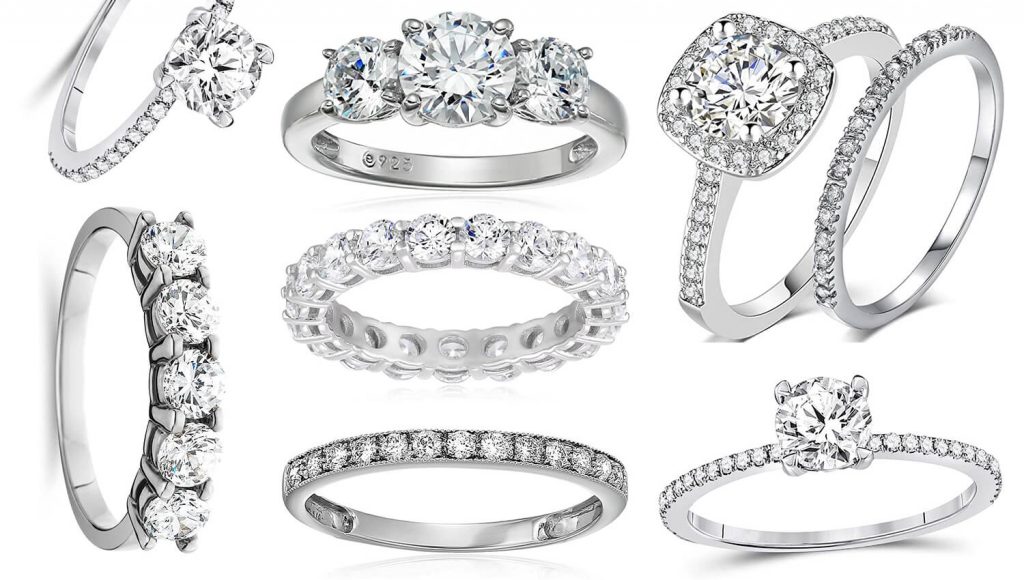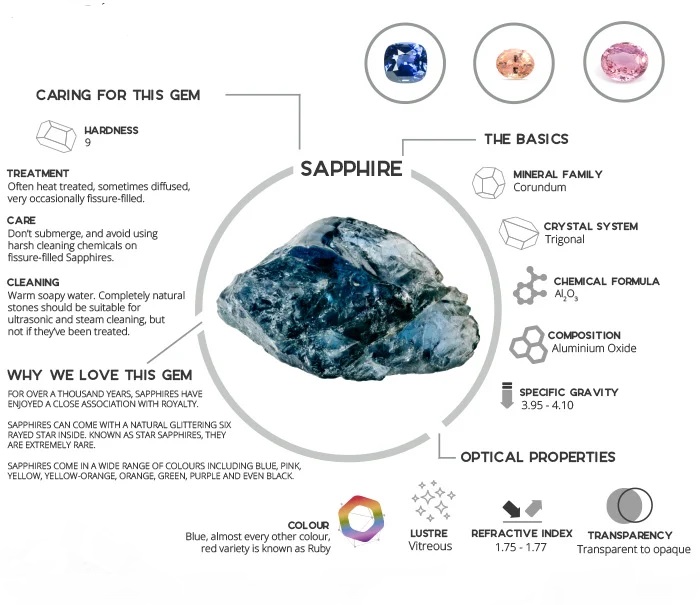
Sapphire Engagement Ring
Selecting the ideal sapphire engagement ring is a thrilling yet detailed process. Unlike diamonds, sapphires come in a spectrum of colors, each offering its own distinct allure. From the classic blue sapphire to rare hues like padparadscha, understanding how to evaluate and choose a sapphire involves considering various factors. This guide will walk you through the essential aspects of selecting a sapphire engagement ring, helping you make an informed and meaningful choice.
Understanding Sapphire Colors
1. Blue Sapphires
Blue sapphires are the most traditional and highly sought-after variety. The most prized blue sapphires exhibit a rich, velvety hue that is neither too dark nor too light. The ideal blue sapphire color is evenly distributed throughout the stone, with no noticeable zoning or unevenness. The depth of blue and the presence of any secondary hues, such as violet, can affect the stone’s overall value and appeal.
2. Pink Sapphires
Pink sapphires offer a romantic and feminine touch. They range from soft pastel pinks to vibrant, deep pinks. The value of pink sapphires is influenced by their color intensity and uniformity. More saturated pink sapphires tend to be more valuable and desirable.
3. Yellow Sapphires
Yellow sapphires are known for their bright and sunny appearance. They can range from pale yellow to deep golden hues. The color should be vivid and evenly distributed to achieve a high-quality yellow sapphire. The intensity of the yellow and the absence of brown or green undertones are important factors in determining the stone’s value.
4. Green Sapphires
Green sapphires are less common and can vary from light green to deep forest green. The most valuable green sapphires have a rich, intense color with no brownish or grayish tints. Green sapphires are unique and can make a striking choice for an engagement ring.
5. Purple Sapphires
Purple sapphires offer a regal and sophisticated look. They can range from pale lavender to deep, intense purple. The most desirable purple sapphires have a rich, vivid color without any brown or gray overtones.
6. Padparadscha Sapphires
Padparadscha sapphires are incredibly rare and feature a unique blend of pink and orange hues. The name “Padparadscha” is derived from the Sinhalese word for “lotus flower,” which reflects their beautiful, delicate color. The value of padparadscha sapphires is influenced by their color balance, with the most prized stones having a harmonious blend of pink and orange.
Evaluating Sapphires: The Four Cs
1. Color
Color is the most critical factor in determining the quality of a sapphire. The most valuable sapphires exhibit a rich, deep hue that is evenly distributed throughout the stone. For blue sapphires, the ideal color is a vibrant, medium to dark blue with no noticeable zoning. For other colors, look for stones with a vivid and consistent color.
2. Clarity
Clarity refers to the presence of inclusions or imperfections within the sapphire. While many sapphires contain inclusions, high-quality stones have fewer and less noticeable imperfections. Eye-clean sapphires, meaning those without visible inclusions to the naked eye, are considered more valuable. However, some inclusions can add character to the stone and are common in natural sapphires.
3. Cut
The cut of a sapphire affects its brilliance and overall appearance. Popular cuts for sapphires include:
- Round Cut: Classic and versatile, enhancing the stone’s brilliance.
- Oval Cut: Elongates the finger and maximizes the sapphire’s color.
- Cushion Cut: Provides a vintage look with a blend of square and round edges.
- Emerald Cut: Highlights the sapphire’s clarity and has a sophisticated appearance.
Each cut has its own charm and can enhance the sapphire’s natural beauty. The choice of cut should complement both the sapphire and the ring setting.
4. Carat Weight
Carat weight measures the size of the sapphire. Larger sapphires are rarer and can be significantly more expensive. However, a well-cut smaller sapphire can be just as captivating as a larger stone. The carat weight should be balanced with the overall design of the ring and the preferences of the wearer.
Choosing the Right Setting
1. Solitaire Setting
A classic solitaire setting is a timeless choice that highlights the sapphire’s beauty. This design places the sapphire in a prominent position, allowing it to stand out as the central focus of the ring. Solitaire settings are elegant and versatile, suitable for any style of sapphire.
2. Halo Setting
A halo setting features a ring of smaller diamonds surrounding the sapphire, adding extra sparkle and creating a stunning visual impact. This design enhances the sapphire’s brilliance and can make the stone appear larger. Halo settings are ideal for those who want a more glamorous and eye-catching look.
3. Vintage-Inspired Settings
For a ring with a touch of old-world charm, consider vintage-inspired designs. These settings often include intricate details, such as filigree work and milgrain edges, and can be customized with sapphires in various colors. Vintage-inspired settings offer a romantic and classic appeal.
4. Modern Settings
Modern settings often feature clean lines and minimalist designs, showcasing the sapphire in a contemporary way. These settings can include geometric shapes and unique metalwork, providing a sleek and sophisticated look. Modern settings are perfect for those who prefer a more understated style.
Customizing Your Sapphire Engagement Ring
1. Choosing the Sapphire Color
Select a sapphire color that reflects your partner’s personality and style. Whether you choose a classic blue sapphire or a unique color like padparadscha, make sure the color complements the overall design of the ring.
2. Selecting the Metal
The metal of the band can influence the look of the sapphire engagement ring. Popular choices include platinum, white gold, yellow gold, and rose gold. Each metal has its own characteristics and can enhance the sapphire’s appearance in different ways.
3. Adding Personal Touches
Consider adding personal touches to the ring, such as engraving a special message or incorporating additional gemstones. These details can make the ring even more meaningful and unique.
Conclusion
Selecting the perfect sapphire engagement ring involves understanding the various aspects of sapphires, including their colors, the four Cs, and the setting options. Whether you are drawn to the classic allure of a blue sapphire or the unique beauty of a rare color, this guide will help you navigate the process and find a ring that perfectly matches your partner’s taste and your budget. By considering the color, clarity, cut, and carat weight, and choosing a setting that complements the sapphire, you can create a stunning and meaningful engagement ring that will be cherished for a lifetime.



